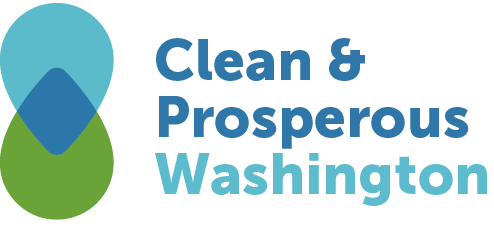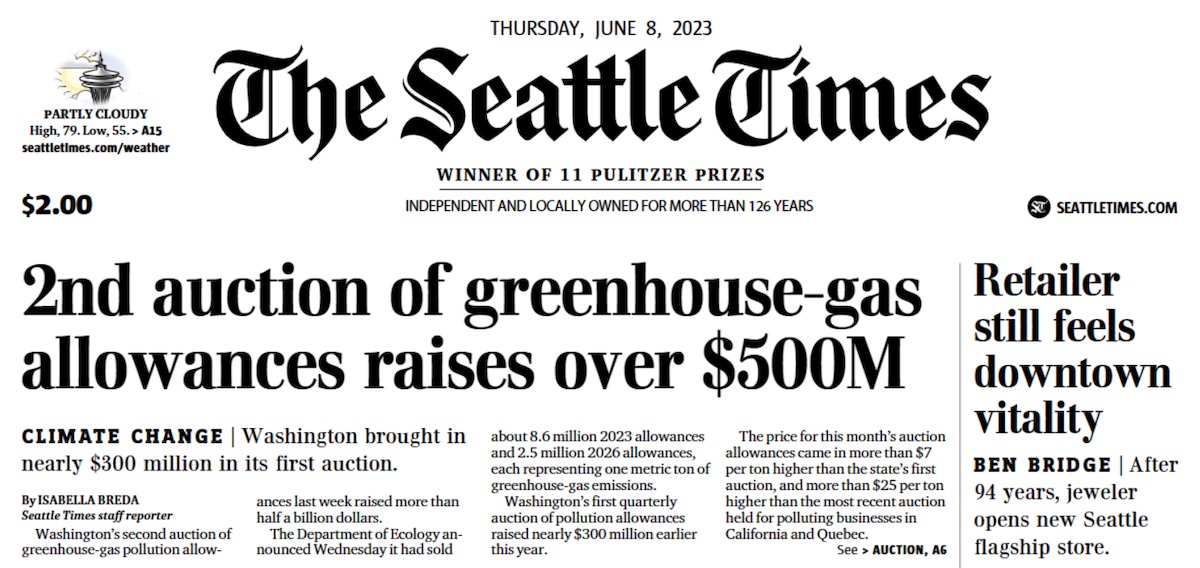2nd CCA auction results released
The landmark Cap-and-Invest Climate Commitment Act (CCA), which went into effect in January of this year, held its second quarterly “emissions allowance auction,” on May 31 with revenues revealed June 7 for climate-resilience programs, and clean energy/clean transportation projects in communities across Washington state.
“On a day when virtually the entire country of Canada and the East Coast of the United States is experiencing its worst air quality in memory, it’s important to center the results of our carbon auctions on the strength of this climate policy,” said Clean & Prosperous Washington board member and former state Senator Reuven Carlyle, the primary author of the CCA. “Our state has chosen a path of climate action.”
“[Yesterday’s] second auction results show an emerging pattern of success where the marketplace is validating a firm cap on carbon emissions as an effective tool to fight climate change,” Carlyle continued. “This climate policy allows flexibility for large emitters to responsibly decarbonize in the most economically efficient way for their company or organization. It’s not a top down, one-size-fits-all regulation.”
“We believe the marketplace recognizes that our state’s cap & invest program is working as intended to accelerate decarbonization,” said Michael Mann, Clean & Prosperous Executive Director. “Since this is a new market, we generally expected the reserve ceiling to be reached as large carbon emitters begin to strengthen their decarbonization plans by including more renewable energy, building efficiency, transportation electrification and more.”
The money raised from the auction pays for direct, high value public benefits including incentives for electric trucks, new hybrid ferries, job training, thousands of new electric charging stations, sustainable aviation fuel, tribal community investments, fish passages for salmon, dairy digester projects and more.
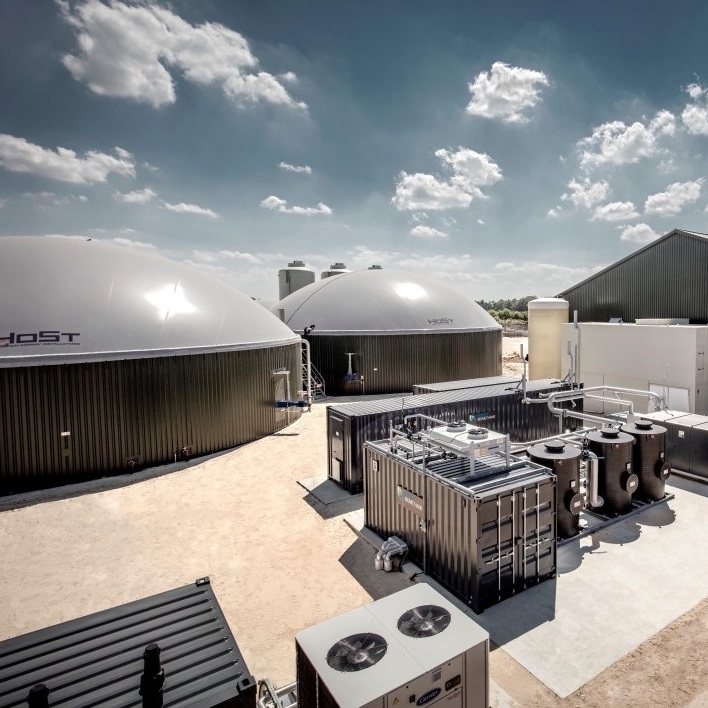
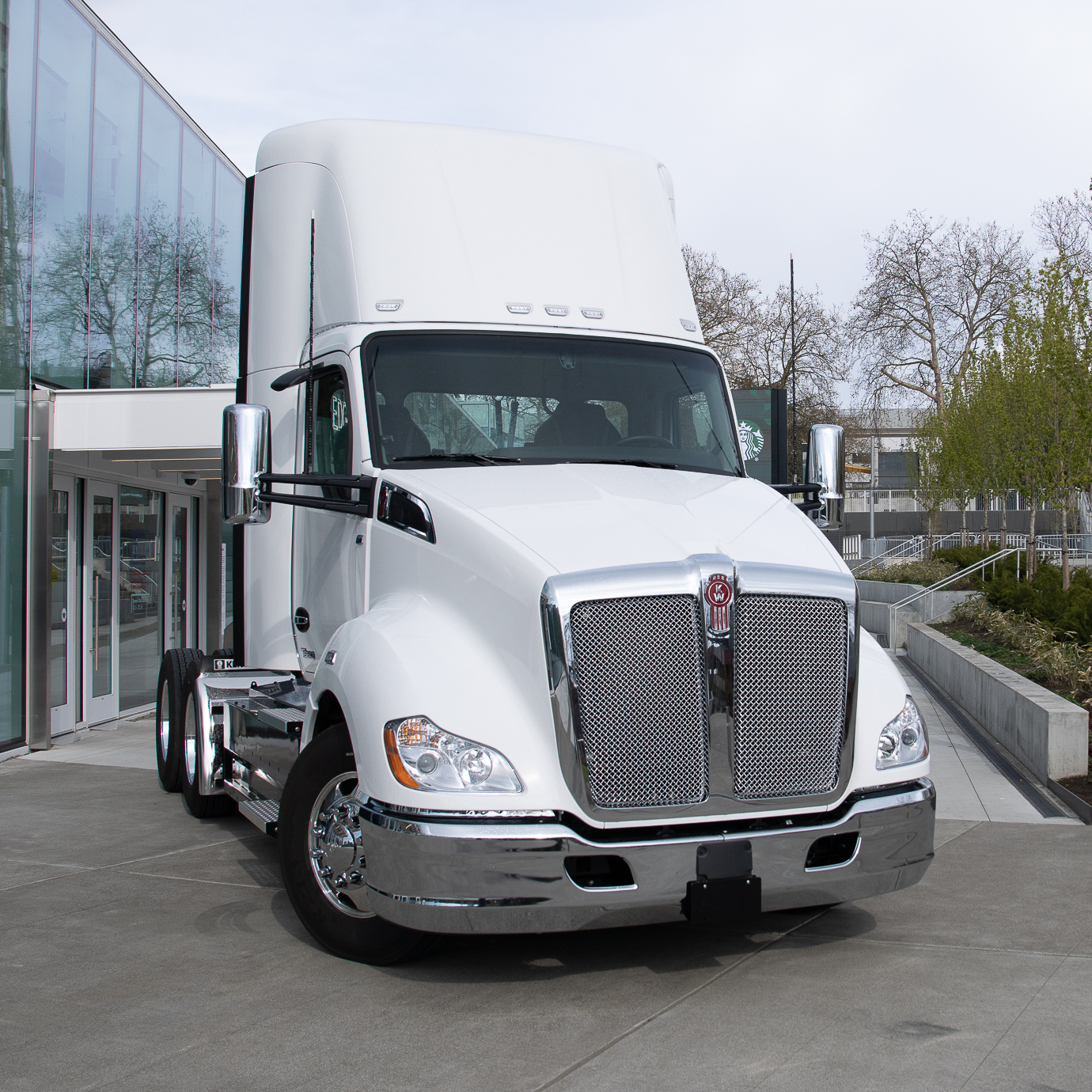
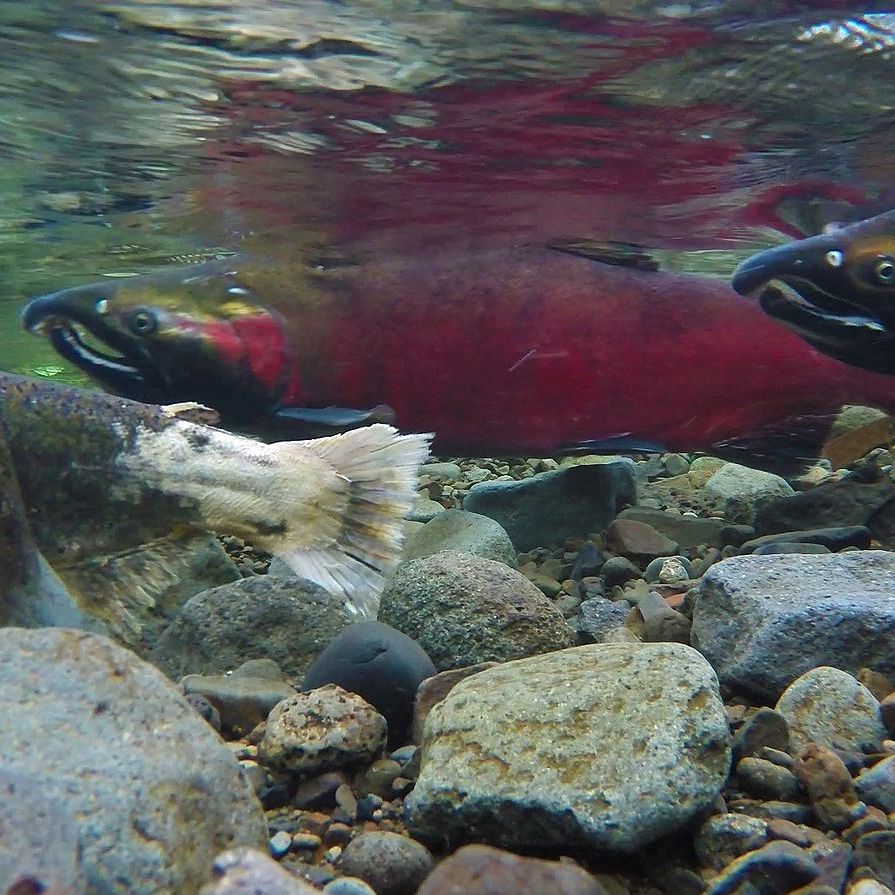
Additionally, Washington is considering linking its Cap-and-Invest carbon market with those in California and Quebec to moderate allowance prices while enabling increased market efficiency. “California and Quebec’s markets are considerably more mature – selling allowances for a decade, raising and reinvesting tens of billions of dollars to date, bringing prices down as intended,” added Carlyle.
The Cap-and-Invest program sets a limit, or cap, on overall carbon emissions in the state and requires businesses to obtain allowances equal to their covered greenhouse gas emissions. These allowances can be obtained through quarterly auctions hosted by the Department of Ecology, or bought and sold on a secondary market (just like stocks and bonds). The cap will be reduced over time to ensure Washington achieves its 2030, 2040, and 2050 emissions-reduction commitments, which means the state will issue fewer emissions allowances each year.
ADDITIONAL INFORMATION ON SECOND AUCTION:
- Total raised from May 2023 auction = $557 million
- The settlement price was $56.01
- 2.4M allowances were sold for $31.12, close to the settlement price in the most recent California auction which was just over $30.
- $50.48 weighted average of all allowances sold in May auction
- “Consigned” allowances from natural gas suppliers (required by law) and possibly, electric utilities (voluntary) have not yet entered the market but will in subsequent auctions.
- Clean & Prosperous Institute estimates 5.35M consigned allowances for natural gas suppliers in 2023. Ecology can apportion those across the auctions in a manner they believe works best.
- The soft cap for CCA auctions was triggered, as the current year settlement prices exceeded $51.90. To mitigate costs, the CCA provides for additional volumes of “Allowance Price Containment Reserve” allowances (up to 9.3M) to be sold in the August quarterly auction.
The Department of Ecology’s Summary Report is available HERE.
As noted in The Seattle Times,
Some oil companies are passing their new compliance expenses down the line to distributors and customers.
“We recognize that in effect, the wholesale price is impacted and the oil companies are going to make choices at the retail level of what they do,” Carlyle said.
Some of that cost is likely also influenced by global commodity oil prices and international policies. Oil companies reported record profits in 2022, totaling an estimated $200 billion.
That serves as a good reminder why investments in accelerating our transition to a clean economy will ultimately lower costs:
Gasoline price per gallon and cost equivalent for electric transportation
Data on gasoline prices (Washington All Grades Conventional Retail) are from the US Energy Information Agency (EIA) Weekly Retail Gasoline and Diesel Prices time series.
Data on electricity prices in gasoline equivalents are derived based on Washington state residential rates from EIA’s Electricity Data Browser “Average retail price of electricity, monthly”.
Gas prices rise and fall due to many factors out of our control. By comparison, electricity as a fuel is cheaper per-mile and prices have proven more stable over time. Greater reliance on clean electric fuel from local hydro, nuclear, solar, and wind electricity production also keeps more dollars and jobs in-state. Next generation liquid fuels sourced from local feedstocks and green hydrogen can provide similar economic and environmental benefits.
Investing in accelerating the transition to stable, locally-sourced-energy for transportation means lower and more predictable prices for businesses and consumers. With funds raised from the Climate Commitment Act auction of allowances, we can build infrastructure, support businesses transitioning fleets, and help more drivers purchase zero emission vehicles. With greater energy self-reliance Washington drivers stand to benefit from lower costs too.
